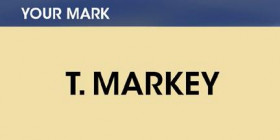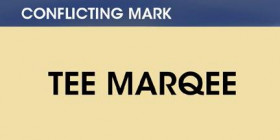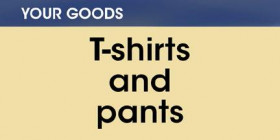The USPTO may be required to refuse registration of your mark on numerous grounds. The most common are:
Likelihood of Confusion: The USPTO conducts a search for conflicting marks as part of the official examination of an application only after a trademark application is filed. In evaluating an application, the examining attorney conducts a search of USPTO records to determine whether there is a conflict between the mark in the application and a mark that is either registered or pending in the USPTO. The principal factors considered in reaching this decision are the similarity of the marks and the commercial relationship between the goods and services identified by the marks. To find a conflict, it is not required that the marks and the goods/services be exactly the same; instead, it is sufficient if the marks are similar and the goods and or services related such that consumers would mistakenly believe they come from the same source.
Similarity in sound, appearance, or meaning may be sufficient to support a finding of likelihood of confusion. The following are some examples of marks that would be considered similar:
Sound
Although spelled differently, the marks sound alike; i.e., they are “phonetic equivalents.”
Appearance
The marks look very similar, even though the one on the right uses a stylized font.
Meaning
The marks are similar because, when the Italian word “LUPO” is translated into English, it means “WOLF.”
Commercial Impression
Because the marks include the same design element, they create a similar overall commercial impression, even though the one on the right also includes words plus the design.
The marks convey a similar general meaning and produce the same mental reaction.
Even if two marks are found to be confusingly similar, a likelihood of confusion will exist only if the goods and/or services upon which or in connection with the marks are used are, in fact, related. To find relatedness between goods and/or services, the goods and/or services do not have to be identical. It is sufficient that they are related in such a manner that consumers are likely to assume (mistakenly) that they come from a common source.
The following are some examples of related goods and/or services:
Goods
Services
Goods and Services
When a conflict exists between the applicant's mark and a registered mark, the examining attorney will refuse registration of the applicant's mark on the ground of likelihood of confusion. If a conflict exists between the applicant's mark and a mark in an earlier-filed pending application, the examining attorney will notify the applicant of the potential conflict. The applicant's mark will be refused on the ground of likelihood of confusion only if the earlier-filed application becomes registered. Therefore, it is critical that you conduct a search for conflicting marks before you file, as the existence of a mark that is confusingly similar to yours and used with related goods and/or services may bar registration of your mark.
For more information about likelihood of confusion, see TMEP §§1207 et seq.
Merely Descriptive and Deceptively Misdescriptive: The examining attorney will refuse registration of a mark as merely descriptive if it immediately describes an ingredient, quality, characteristic, function, feature, purpose or use of the specified goods or services. For example, the mark “CREAMY” would be merely descriptive for yogurt and the mark “WORLD’S BEST BAGELS” would be merely descriptive for bagels.
A mark will be refused as deceptively misdescriptive if (1) the mark misdescribes an ingredient, quality, characteristic, function, feature, purpose or use of the specified goods or services; and (2) the misrepresentation conveyed by the mark is plausible. For example, the mark “THC Tea” would be deceptively misdescriptive of tea-based beverages not containing THC and the mark “SEPTEMBER 11, 2011” would be deceptively misdescriptive of history books and entertainment services not pertaining to the events of September 11, 2001.
For more information about merely descriptive and deceptively misdescriptive marks, see TMEP §§1209 et seq.
Primarily Geographically Descriptive and Primarily Geographically Deceptively Misdescriptive: The examining attorney will refuse registration of a mark as primarily geographically descriptive if: (1) the primary significance of the mark is a generally known geographic location; (2) purchasers would be likely to think that the goods or services originate in the geographic place identified in the mark, i.e., purchasers would make a goods/place or services/place association; and (3) the mark identifies the geographic origin of the goods or services. For example, the mark “THE NASHVILLE NETWORK” would be primarily geographically descriptive of television program production and distribution services that originate in Nashville, Tennessee.
A mark will be refused as primarily geographically deceptively misdescriptive if: (1) the primary significance of the mark is a generally known geographic location; (2) purchasers would be likely to think that the goods or services originate in the geographic place identified in the mark, i.e., purchasers would make a goods/place or services/place association; (3) the goods or services do not originate in the place identified in the mark; and (4) the misrepresentation would be a material factor in a significant portion of the relevant consumers’ decision to buy the goods or use the services. For example, the mark “REAL RUSSIAN” would be primarily geographically deceptively misdescriptive for vodka that does not come from Russia.
For more information about primarily geographically descriptive and primarily geographically deceptively misdescriptive marks, see TMEP §§1210 et seq.
Primarily Merely a Surname: The examining attorney will refuse registration of a mark if the primary significance to the purchasing public is a “surname”, i.e., a family name or last name. For example, the mark “BINION’S” would be considered is primarily merely a surname. In addition, the mark “HAMILTON PHARMACEUTICALS” would be considered primarily merely a surname for pharmaceutical products.
For more information about surnames, see TMEP §§1211 et seq.
Ornamentation: In general, the examining attorney will refuse registration if the applied-for mark is merely a decorative feature or part of the "dress" of the goods. Such matter is merely ornamentation and does not serve the trademark function of identifying and distinguishing the applicant's goods from those of others.
With respect to clothing, consumers may recognize small designs or discrete wording as trademarks, rather than as merely ornamental features, when located, for example, on the pocket or breast area of a shirt. Consumers may not, however, perceive larger designs or slogans as trademarks when such matter is prominently displayed across the front of a t-shirt. For example, the mark “BLACKER THE COLLEGE SWEETER THE KNOWLEDGE” centered in large letters across most of the upper half of a shirt, was found to be a primarily ornamental slogan that was not likely to be perceived as a trademark (source indicator).
For more information about ornamentation, see TMEP §§1202.03 et seq.
NOTE: For a complete list of the substantive grounds of refusal and a detailed explanation of each (including possible responses to a refusal), see Chapter 1200, Trademark Manual of Examining Procedure (TMEP). The USPTO cannot provide preliminary legal advice as to whether we will register a particular mark; filing an application is the only way to obtain a decision on whether the USPTO will refuse registration.















